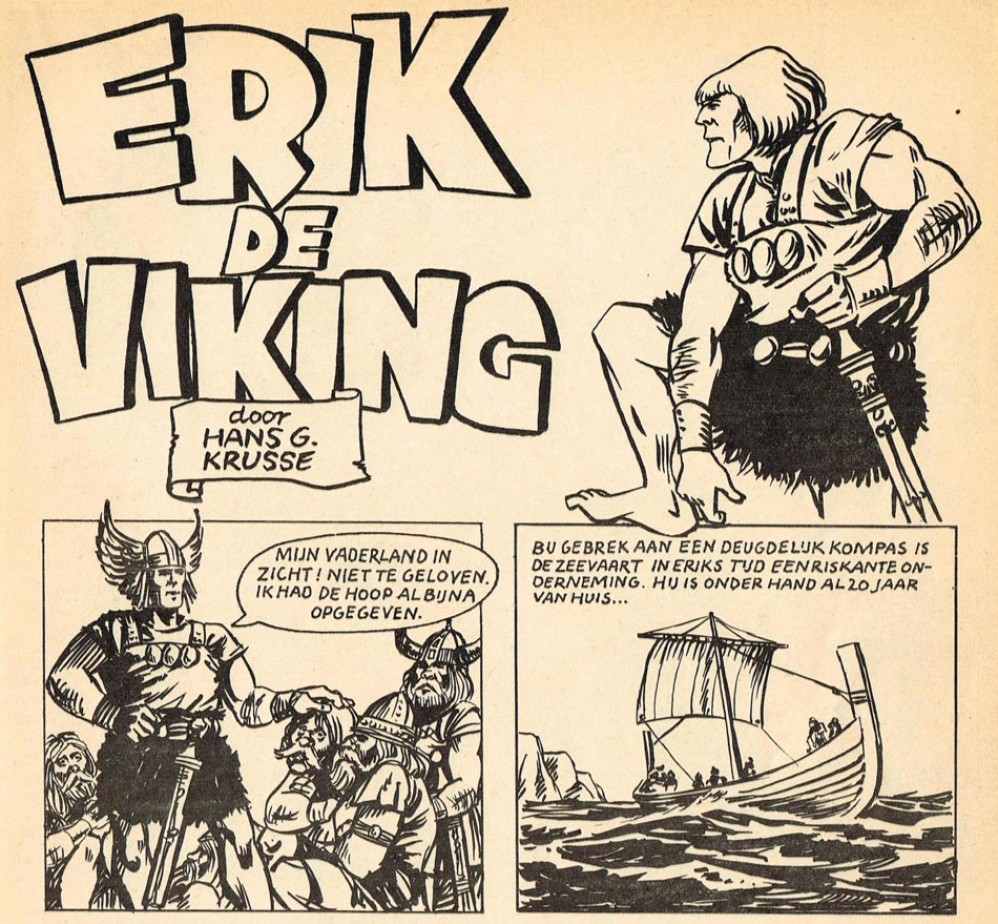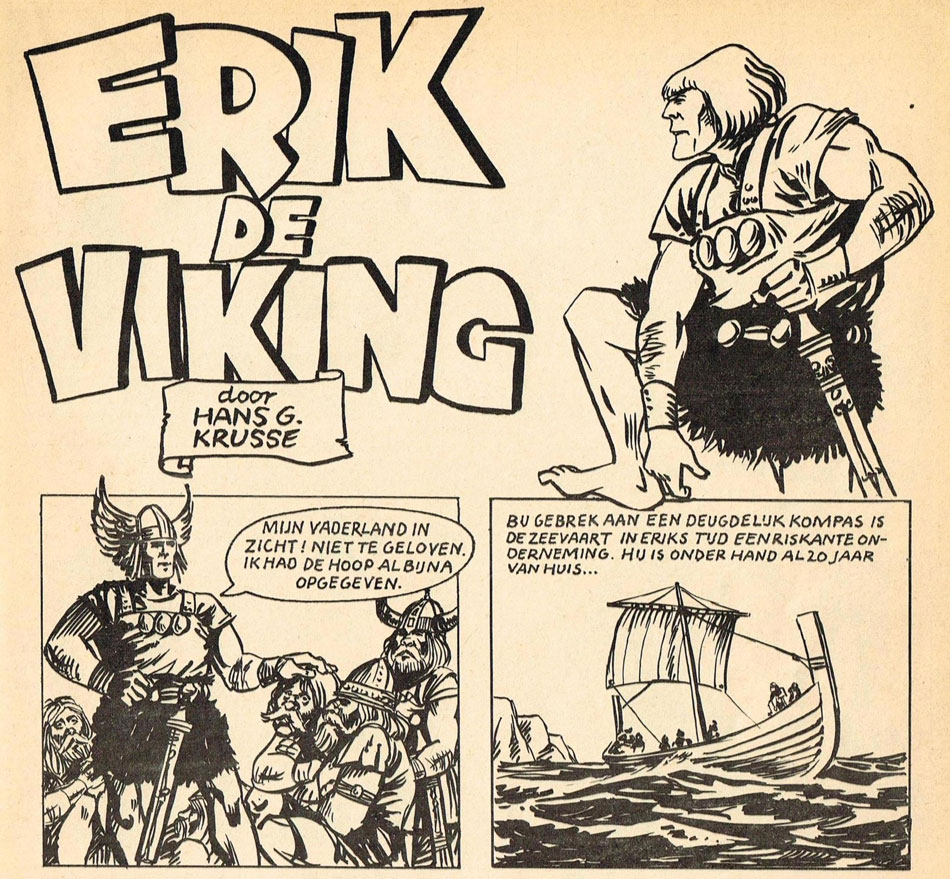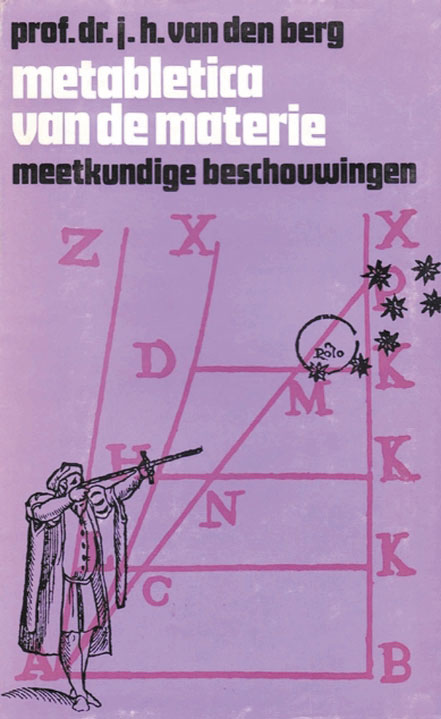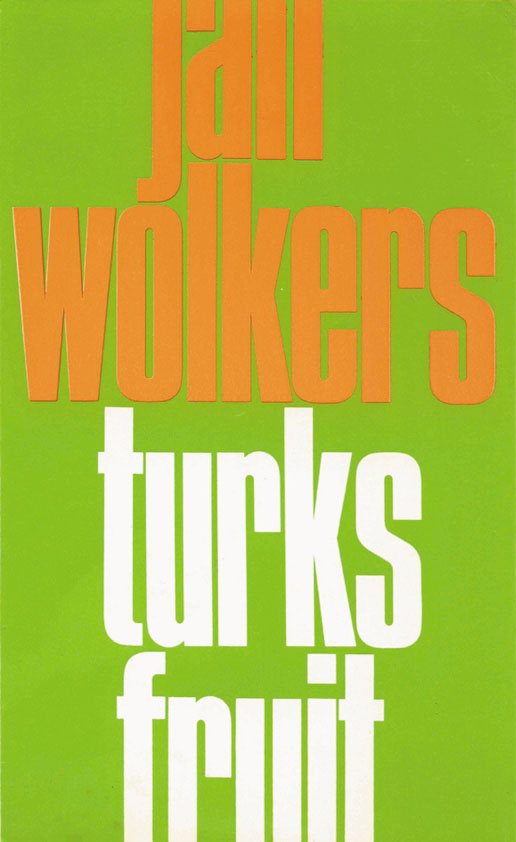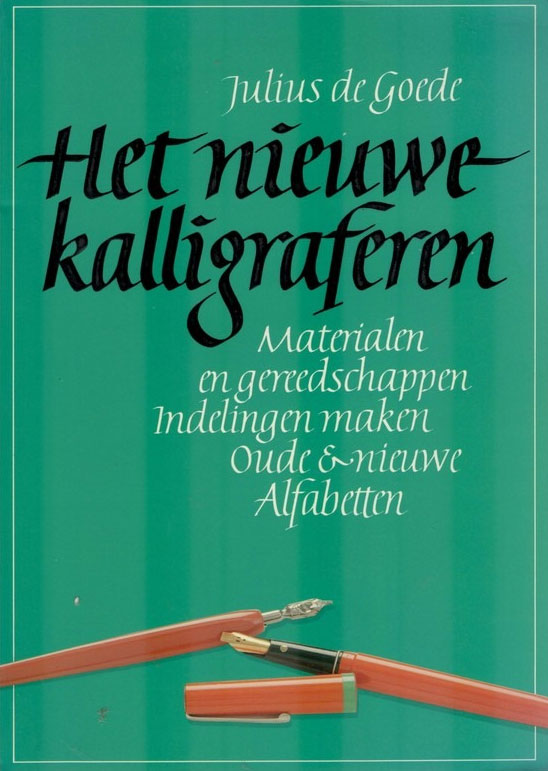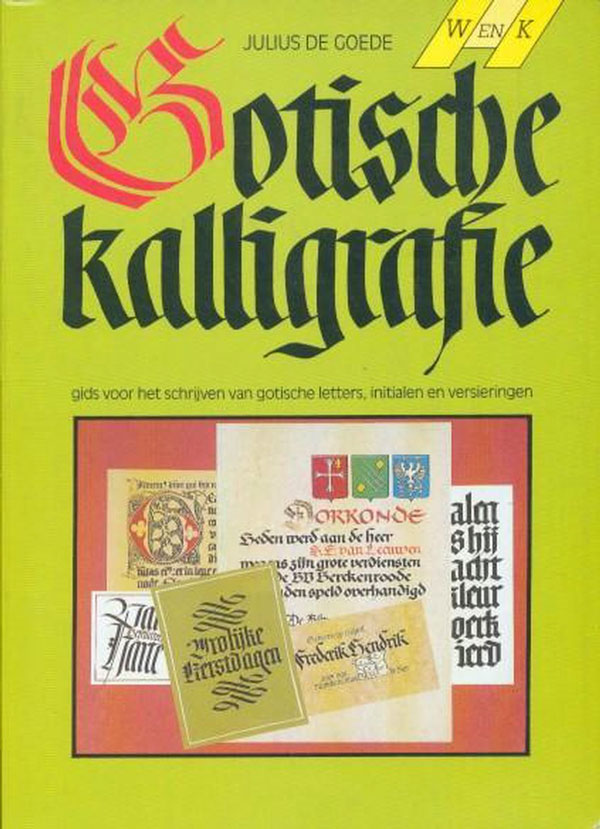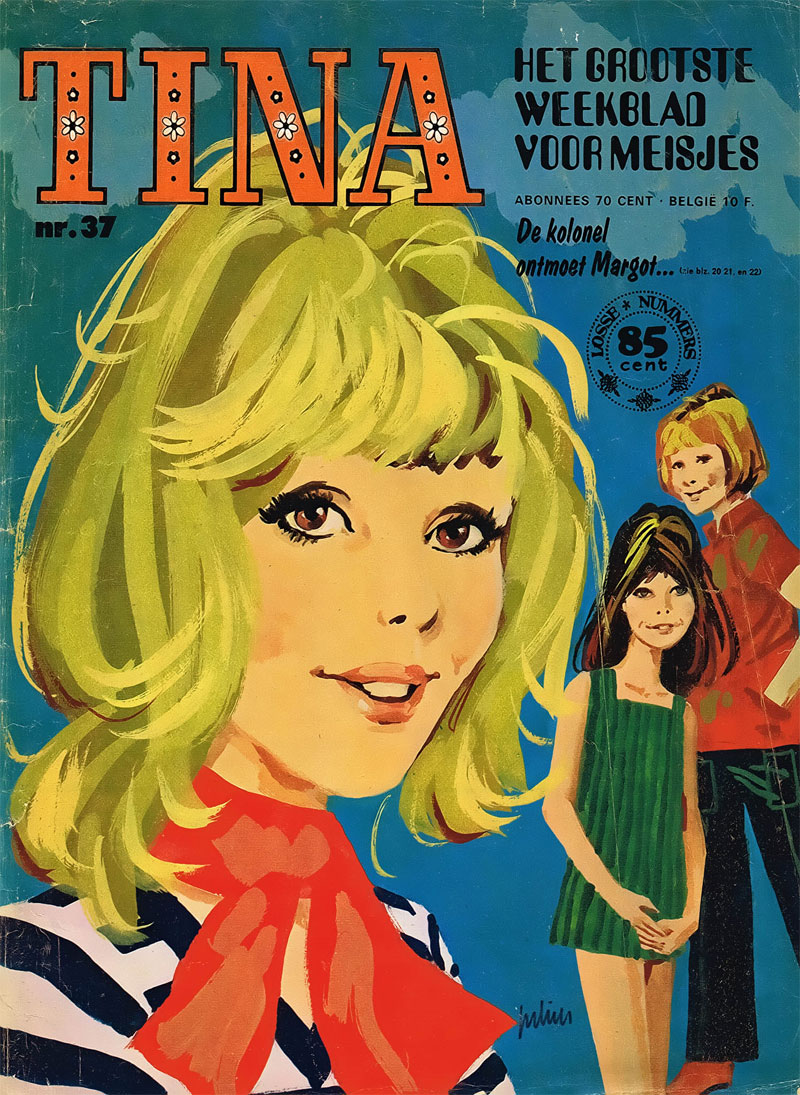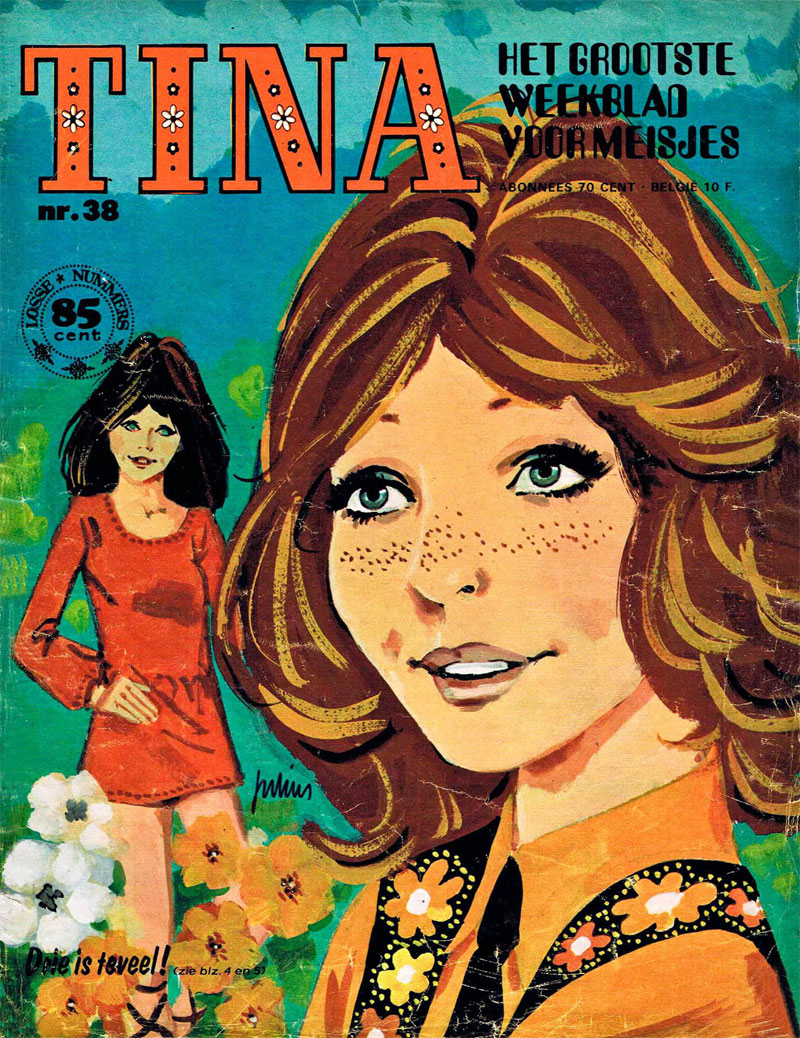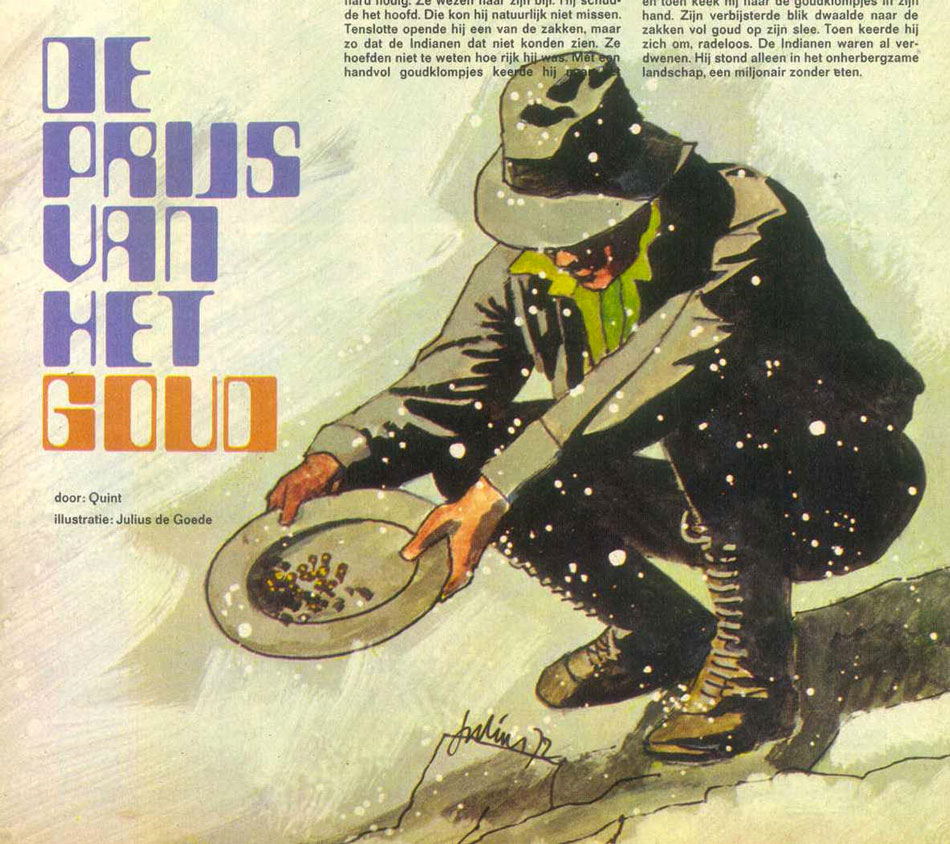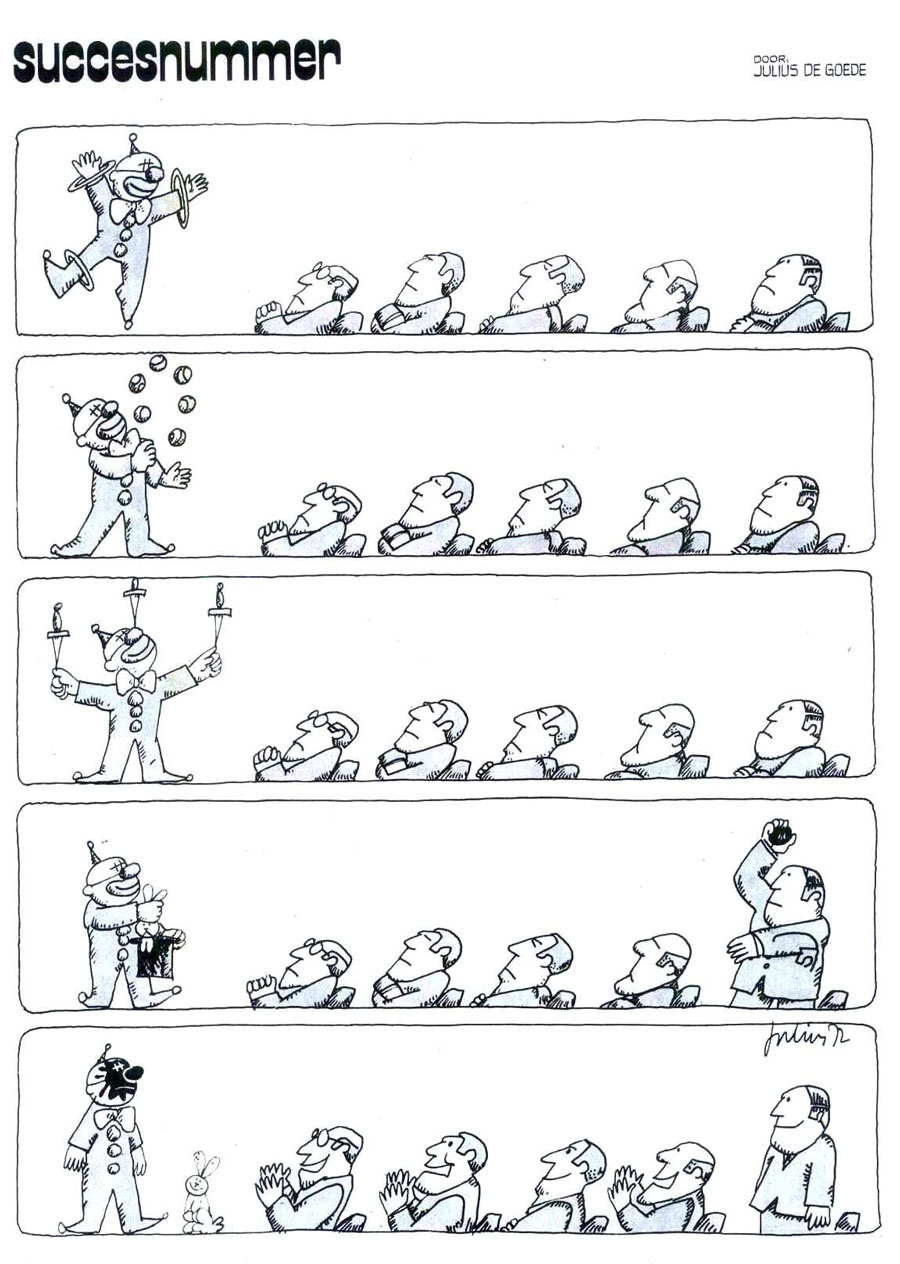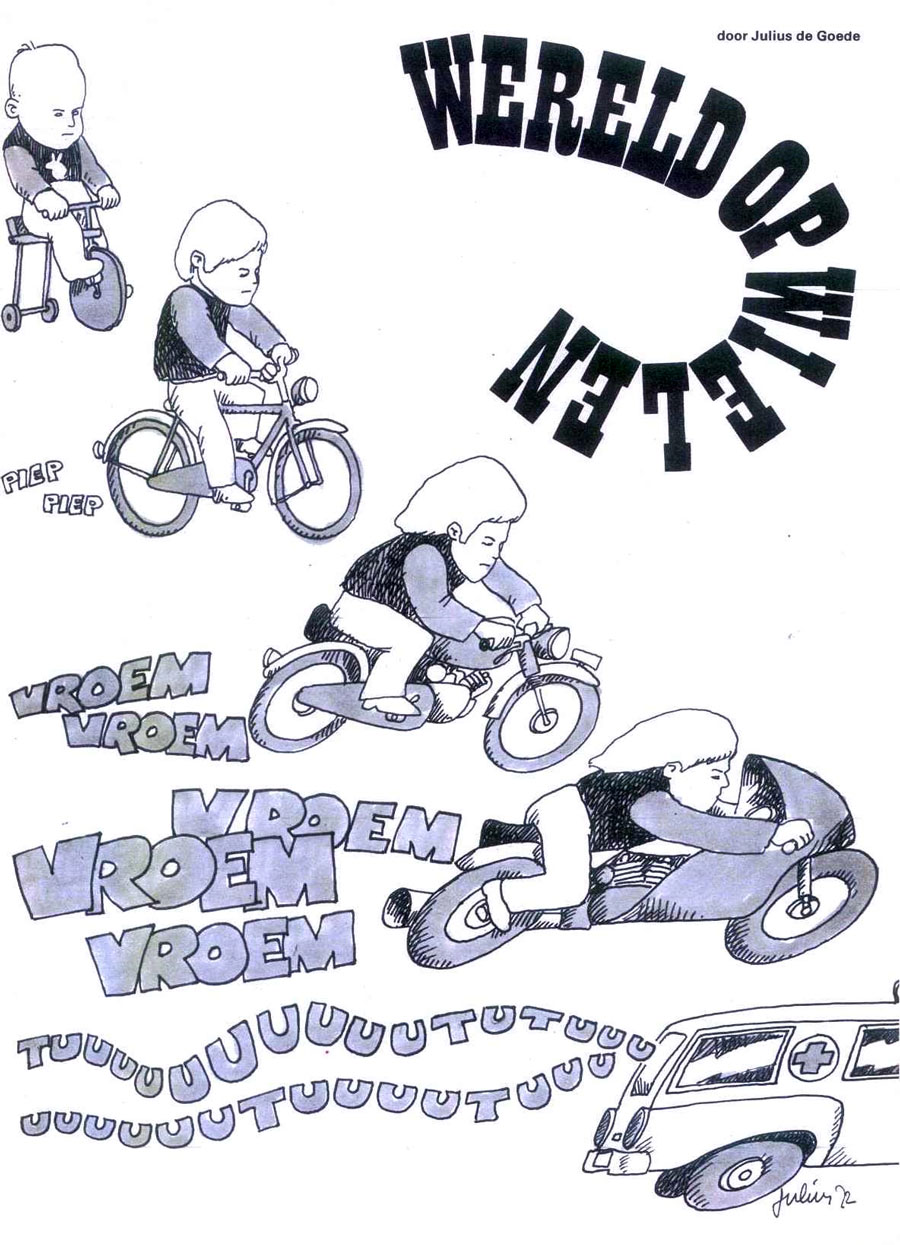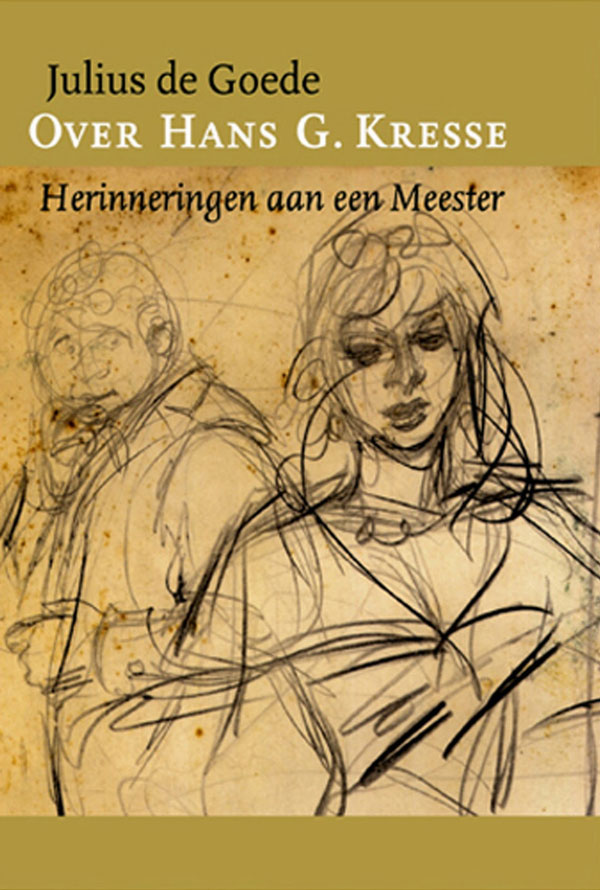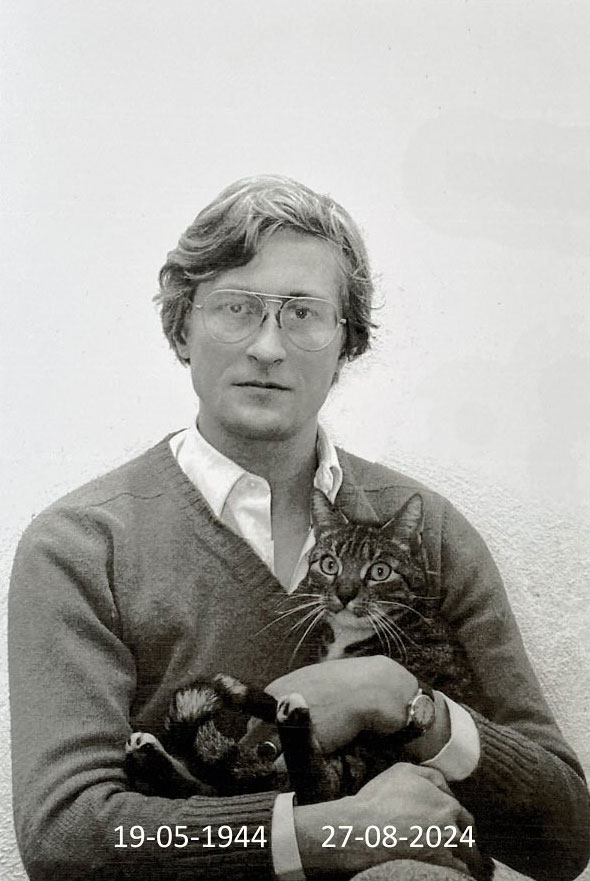'Eric de Noorman' spoof by Julius de Goede in Mad #21 (Dutch edition, 1967).
Julius de Goede was a Dutch illustrator, graphic designer and publisher, as well as an expert on calligraphy and the life and work of the legendary Dutch comic creator Hans G. Kresse. Besides creating some sporadic comics himself, he was involved in the production of several book publications of Dutch comics patrimony, either through his own imprint or through Hans Matla's Panda.
Early life and career
Cornelis Gerardus Johannes de Goede was born in 1944 in Utrecht. His father was the legal historian and expert on medieval history Arian de Goede (1915-1957), who wrote a great many articles, as well as poems, novellas and plays. Julius de Goede got his education at the Arnhem Academy of Fine Arts in the department of advertising and illustration, where among his fellow students were Arno van Dijk, Bernhard Willem Holtrop and Fiel van der Veen. Their teacher was the charismatic graphic designer and typographer Jan Vermeulen (1923-1985), who became De Goede's friend and mentor. To earn a living, De Goede and his fellow students began making cartoons, which they sometimes managed to sell to newspapers and magazines. Through Vermeulen, De Goede for instance became a regular cartoonist for the magazine Litterair Paspoort, and with Van der Veen he designed a few local art exhibitions and books on art history. After graduation, De Goede was also a pupil of the illustrator Piet Donkersloot (1930-1986), who taught him how to make painted illustrations.
Early graphic design work by Julius de Goede.
Graphic design
After fulfilling his military service in 1967, Julius de Goede began working as a commercial illustrator and graphic designer, based in Utrecht. Early in his career, he ran an agency for visual communication with his former professor Jan Vermeulen ("Adviesbureau voor Visuele Kommunikatie"). They provided graphic design and typography for book publishers like Ambo, Bruna, De Fontijn, Sijthoff, Wereldvenster, Gottmer, Servire and Het Spectrum. One of their notable designs was the cover of 'Turks Fruit' ('Turkish Delight'), the classic 1969 novel by Jan Wolkers, one of Vermeulen's friends. After a while, De Goede began working mostly on his own, designing book covers and interiors for additional publishers like Bosch & Keuning, Callenbach, Coutinho, Nelissen, Stenvert and Van der Wees. Besides some novels, he mostly worked on history books, guide books, cook books, hobby books and educational material. For Van Dale and Reader's Digest, he also designed dictionaries.
Calligraphy books by Julius de Goede.
Calligraphy
Over the course of the 1970s, De Goede gradually came to notice as an expert on typography and calligraphy, and began working as a teacher in handwriting. From the 1970s through the 1990s, he wrote a great many articles on writing education for specialized magazines like Resonans, School, De Letter and Praxis Bulletin. For the educational publisher Wolters-Noordhoff, he helped develop 'Ik Schrijf', a 1980s writing method for primary schools, and he was later also one of the authors of Malmberg's writing method 'Schrijf Actief'. In addition, he set up a correspondence course in calligraphy for LOI in Leiden. His several books on the art of calligraphy were published by Cantecleer, Luitingh and Kosmos in the Netherlands, as well as Lademann in Denmark and Augustus Verlag and Droemer Knaur in Germany.
Cover paintings for Tina issues #37 and #38 of 1973, filling in for Purita Campos.
Illustrator/painter
As an illustrator/painter, Julius de Goede was for hire as a portrait painter. His painted illustrations also appeared on the covers of pocket books published by Prisma and A.W. Bruna & Zoon. With his favorite artist Hans G. Kresse, he designed a cover for the 'Arendsoog' book series by P. Nowee ('Mexicaans Avontuur', 1971). Through Kresse, he was also introduced to the editors of the comic magazine Pep, for whom he illustrated several text stories. Among the other magazines with De Goede's illustrations were Panorama, Nieuwe Revu, Melanie, Prinses, Okki, Taptoe, Tina and Doe-het-zelf.
Text story illustration by Julius de Goede for Pep #19, 11 May 1973.
Comics
By the late 1960s, De Goede had already showcased his interest in comics. In 1967, he appeared in issue #21 of the Dutch edition of Mad Magazine with 'Erik de Viking, door Hans G. Krusse', a three-page spoof of Hans G. Kresse's 'Eric de Noorman' comic. His further excursions into creating comics himself were three one-shot gag pages in the section 'Pep Spotter' in Pep magazine, one in 1970, two in 1973. Later in his career, in 2004, De Goede contributed another comic story to the third issue of the Utrecht comic magazine De Inktpot.
'Pep Spotter' comics for Pep issues #19 (11 May 1973) and #20 of (18 May 1973).
Kresse and other comic collections
However, in comics circles, Julius de Goede was mostly known for his work on secundary literature and luxury compilation editions. During the 21st century, while gradually retiring from his commercial art jobs, he collaborated with Hans Matla of the Panda publishing house on the design and production of the compilation volumes of Alfred Mazure's 'Dick Bos' and Marten Toonder's 'Panda'. He was also a proofreader for the compilations of Toonder's 'Kappie', published by Stripstift. Through Panda, he also released 'Kasteelverhalen & Andere Geschiedenissen' (Panda, 2008), a book collecting Hans G. Kresse's medieval illustrations.
'Over Hans G. Kresse. Herinneringen Aan Een Meester'.
For most of his Kresse compilations, De Goede however used his own imprint, Julius de Goede BV. These included further volumes of Kresse's historical illustrations for magazines, book collections with early Kresse comics like 'Matho Tonga' (four, volumes, 2014), 'Detective Kommer' (2017) and 'Pim en de Venusman' (2018), as well as 'Eric de Noorman' books with the artwork printed on full-scale. As an avid collector of Kresse's work, De Goede had access to the artist's most obscure productions, like the early Native American comic 'De Gouden Dolk' (2016) and 'Een Boekverslag van Wilde vaart' (2016), collecting Kresse's first book illustrations. In 2010, De Goede wrote a book about his friendship with Hans G. Kresse, 'Herinneringen aan een Meester'. In addition to Kresse, Julius de Goede also released books collecting the comics and other work of Arne Zuidhoek.
Final years and death
On 26 September 2021, Julius de Goede was awarded the Bulletje & Boonestaak Plate by Dutch comic appreciation society Het Stripschap for his work on his "Kresse library". On 27 August 2024, he died. He was 80 years old.
Julius de Goede.


